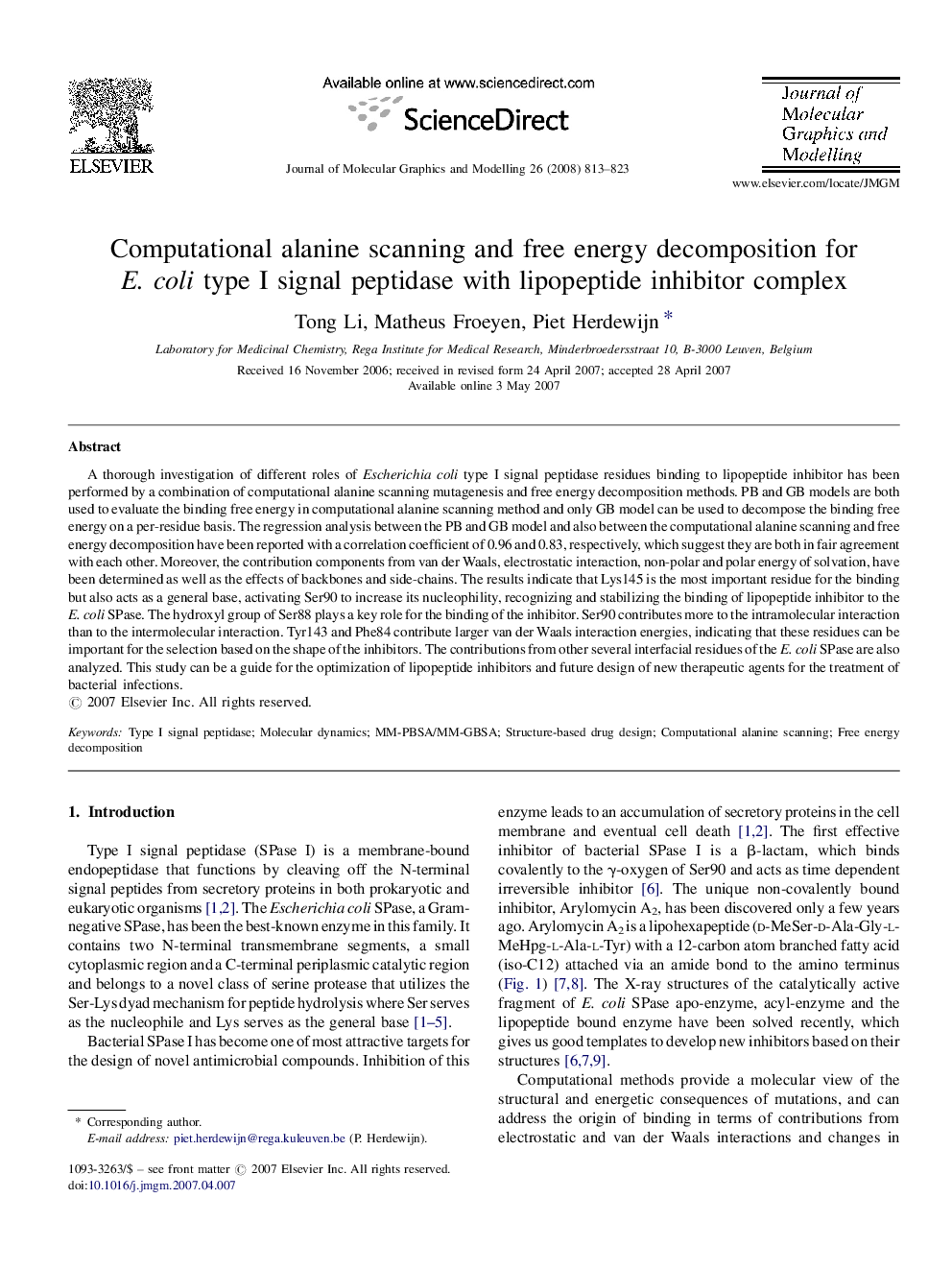| Article ID | Journal | Published Year | Pages | File Type |
|---|---|---|---|---|
| 444730 | Journal of Molecular Graphics and Modelling | 2008 | 11 Pages |
A thorough investigation of different roles of Escherichia coli type I signal peptidase residues binding to lipopeptide inhibitor has been performed by a combination of computational alanine scanning mutagenesis and free energy decomposition methods. PB and GB models are both used to evaluate the binding free energy in computational alanine scanning method and only GB model can be used to decompose the binding free energy on a per-residue basis. The regression analysis between the PB and GB model and also between the computational alanine scanning and free energy decomposition have been reported with a correlation coefficient of 0.96 and 0.83, respectively, which suggest they are both in fair agreement with each other. Moreover, the contribution components from van der Waals, electrostatic interaction, non-polar and polar energy of solvation, have been determined as well as the effects of backbones and side-chains. The results indicate that Lys145 is the most important residue for the binding but also acts as a general base, activating Ser90 to increase its nucleophility, recognizing and stabilizing the binding of lipopeptide inhibitor to the E. coli SPase. The hydroxyl group of Ser88 plays a key role for the binding of the inhibitor. Ser90 contributes more to the intramolecular interaction than to the intermolecular interaction. Tyr143 and Phe84 contribute larger van der Waals interaction energies, indicating that these residues can be important for the selection based on the shape of the inhibitors. The contributions from other several interfacial residues of the E. coli SPase are also analyzed. This study can be a guide for the optimization of lipopeptide inhibitors and future design of new therapeutic agents for the treatment of bacterial infections.
